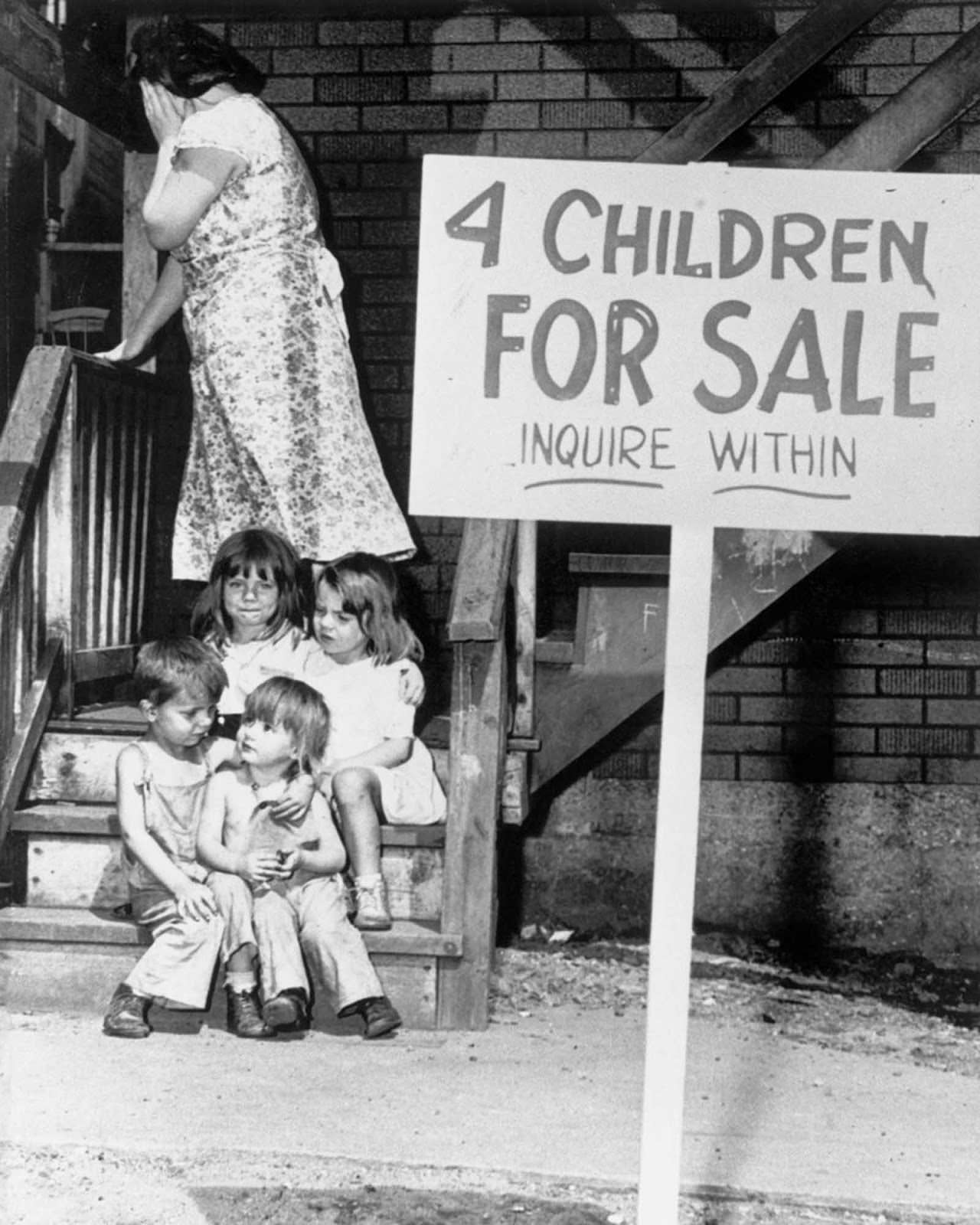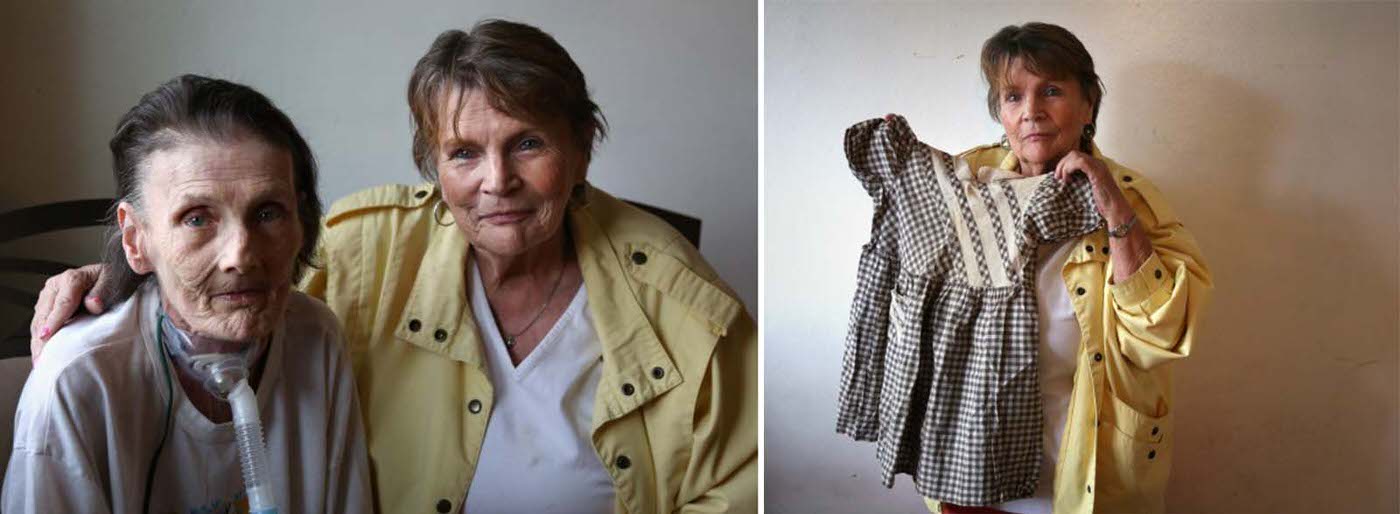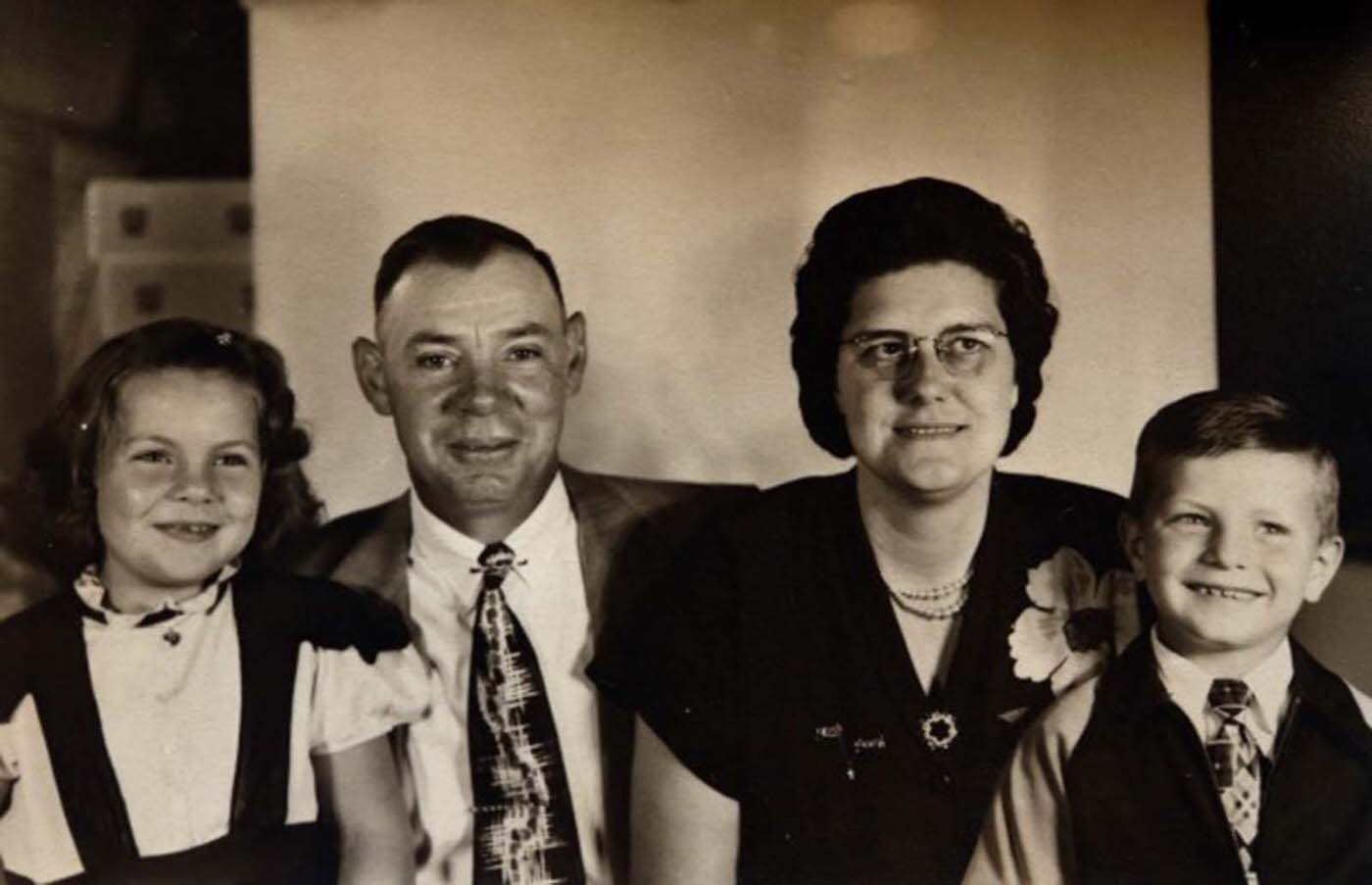The photograph titled “Children for Sale 1948” is a haunting reminder of a dark chapter in American history. The image depicts the Chalifoux family, who were faced with the dire situation of being evicted from their apartment with no place to turn. Desperate to find a solution, the jobless coal truck driver and his wife decided to sell their four young children

The image captures the anguish and despair on the faces of the children, who stare back at the camera with a sense of wonder and confusion. On the top step of the stoop are Lana, aged 6, and Rae, aged 5. Below them sit Milton, aged 4, and Sue Ellen, aged 2. Mrs. Lucille Chalifoux, their mother, turns her head away from the camera, perhaps overcome with emotion or shame.
The Chalifoux family’s story highlights the poverty and desperation many families faced during the Great Depression and post-World War II era. The Chalifoux’s were not alone in their struggle; many families faced the stark reality of homelessness and hunger during this time.
The tragic story of the Chalifoux family
In 1948, Mr. and Mrs. Ray Chalifoux struggled to make ends meet. Ray had lost his job as a coal truck driver, and the family was facing eviction from their apartment in Chicago. With no other options, they decided to sell their four children. Ultimately, the children were not sold. A local organization, the Travelers Aid Society, intervened and helped the family find a new home and provided them with assistance to get back on their feet. The Chalifoux family’s story has become a symbol of the struggles that many families faced during the Great Depression era, and the photo remains a powerful reminder of the need to address poverty and economic inequality.
After the photo was published, the Chalifoux family became somewhat of a media sensation. They were interviewed on several radio and television programs, and the public continued supporting them. However, the family faced continued hardships following the photo’s publication. Ray Chalifoux struggled to find steady employment, and the family was forced to move frequently in search of work.
Sadly, some of the children’s lives were cut short. Milton died at the age of 18 from complications related to alcoholism, and Rae passed away at the age of 29 from an illness. Lana and Sue Ellen both survived into adulthood, and Sue Ellen was the last surviving member of the family. She passed away in 2016 at the age of 70.


Photographer behind the photo
The photograph was taken in 1948 by a photographer for the Detroit News, who stumbled upon the Chalifoux family while working on a story about poverty in the city. The image was initially intended to be part of a larger story on poverty and homelessness in Detroit. Still, it quickly became a symbol of a much larger issue: the plight of impoverished families nationwide. It quickly gained widespread attention and became the subject of national news coverage. The image shocked the country, and people overreached to help the family. The Chalifoux’s eventually found a place to live, and their children were returned to them.
The story of the Chalifoux family continues to resonate with people today. It is a stark reminder of the consequences of poverty and the need for social and economic support systems to help families in need. The image of the Chalifoux family, with their faces etched with sadness and despair, serves as a call to action for us to do more to address the root causes of poverty and homelessness.
Since the photograph was taken, much has changed in the United States. Social welfare programs such as Medicaid and food assistance programs have helped to lift millions of families out of poverty. However, poverty remains a persistent issue in many communities across the country. The COVID-19 pandemic has only exacerbated the problem, with millions of families facing job loss and financial insecurity.
As we reflect on the photograph of the Chalifoux family and their struggles, we must also look forward and work towards building a better future for all families. This means investing in education, job training, and social welfare programs that can help lift families out of poverty and give them the support they need to thrive. It also means advocating for policies that address systemic issues such as income inequality and housing insecurity.


